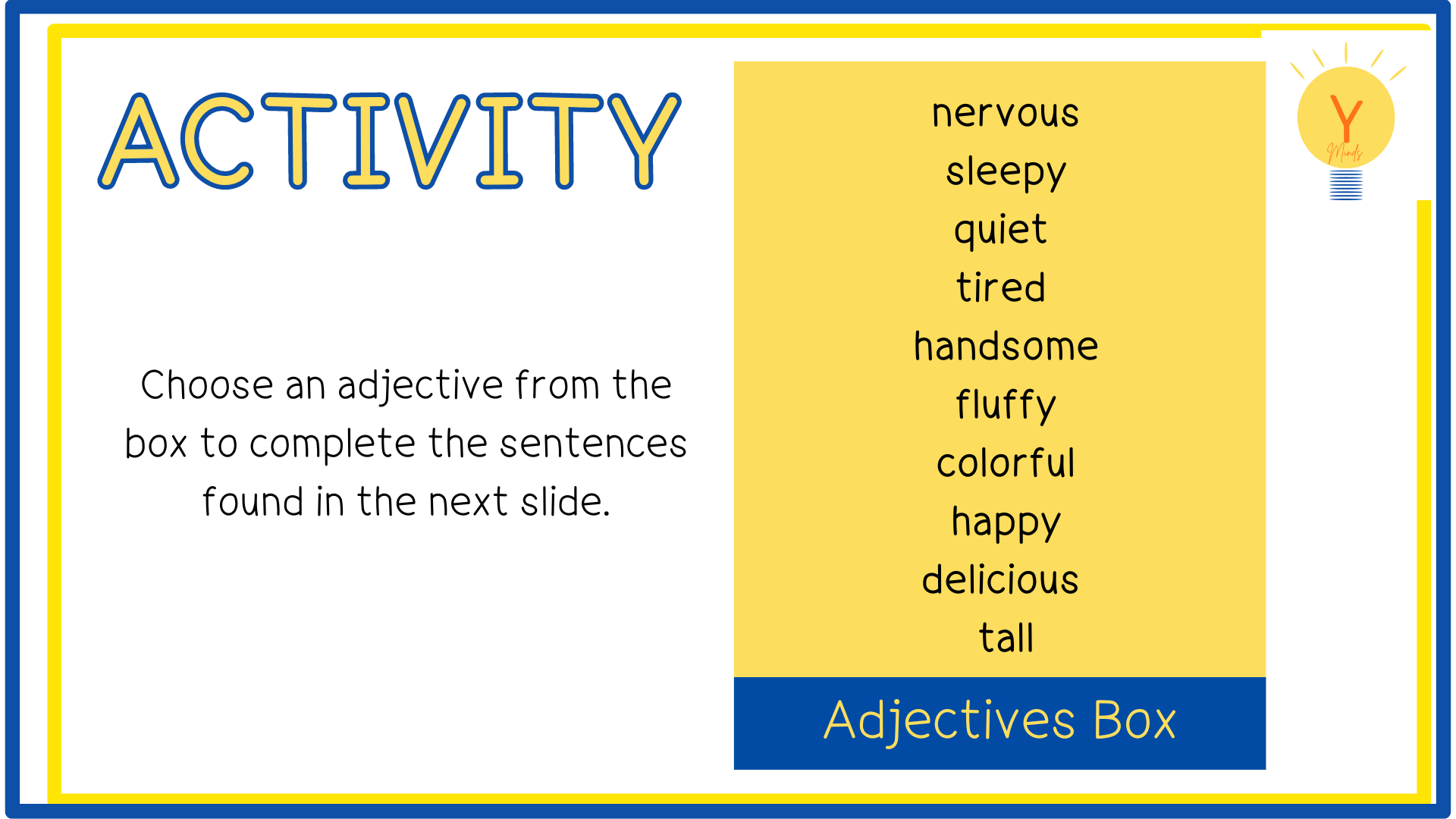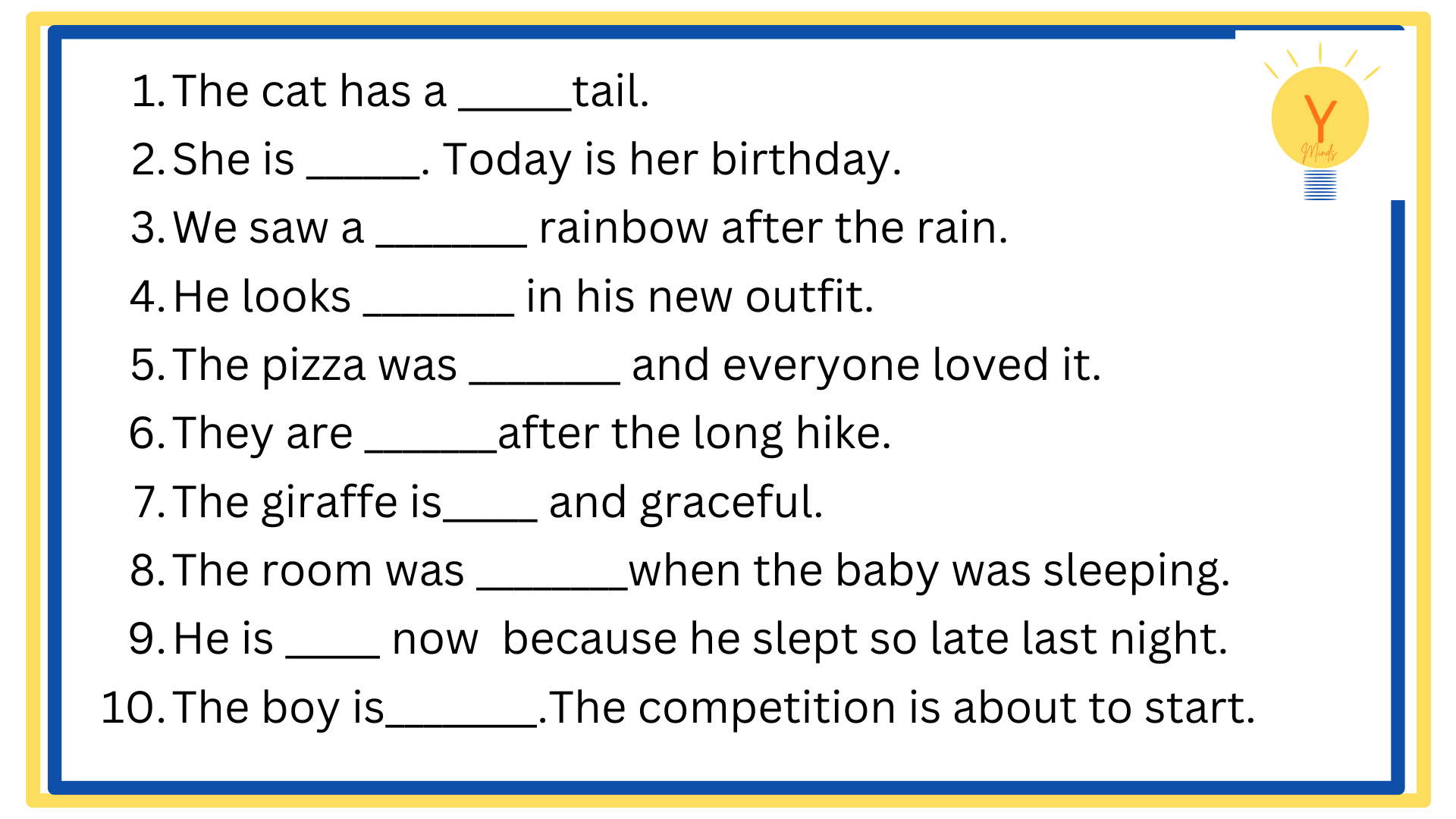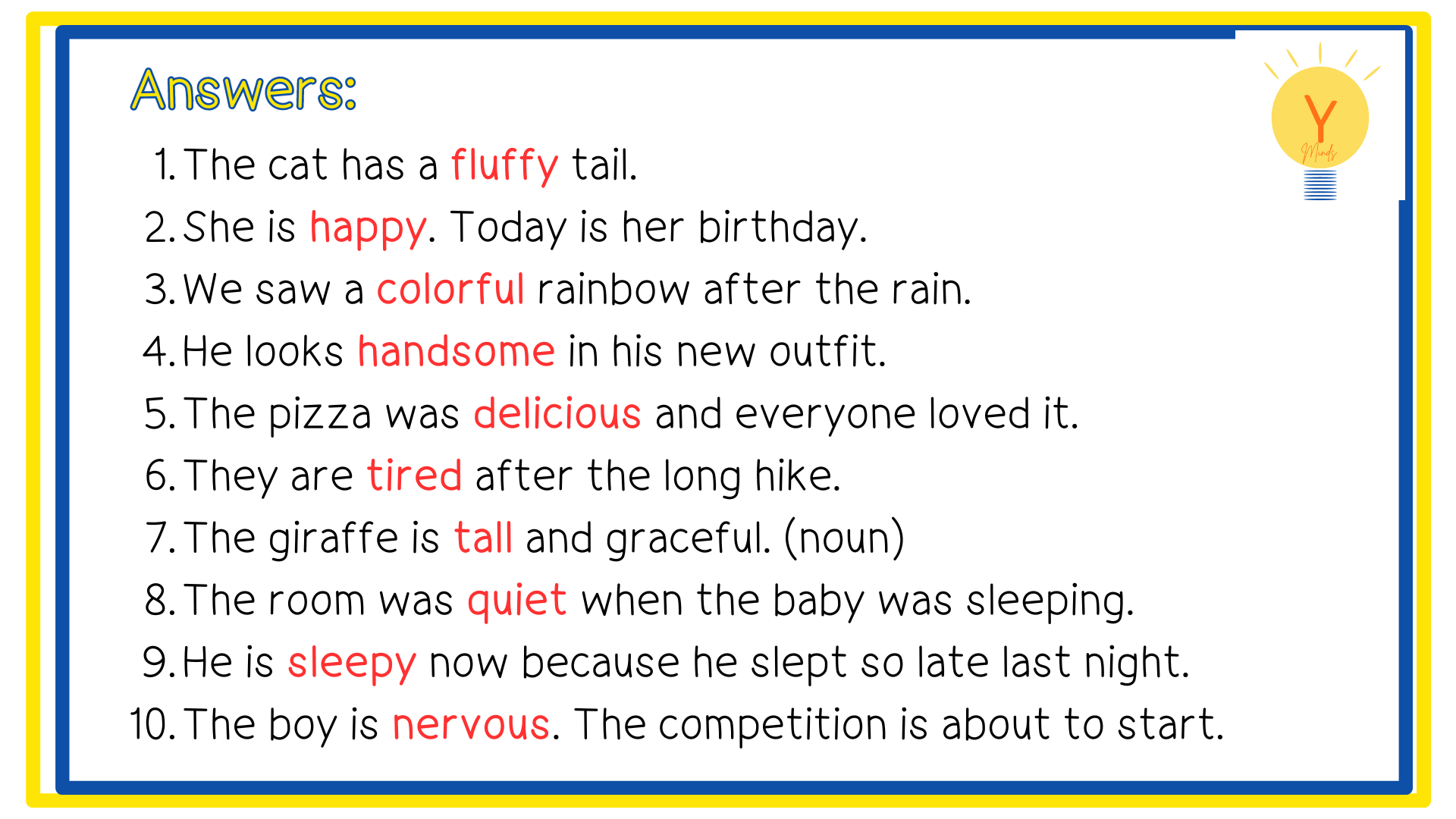Hi, Super Learners! Welcome to today’s lesson, where we’re going to learn all about adjectives! Are you ready? Let’s dive in!
What is an Adjective?
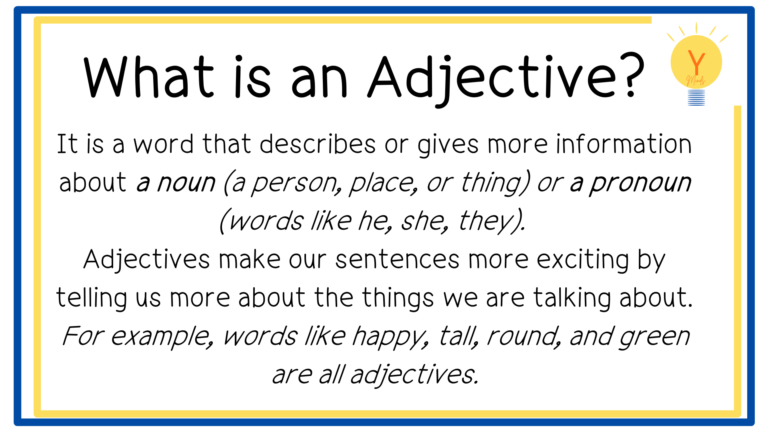
How Do Adjectives Work?
Adjectives can tell us what something looks like, how it feels, sounds, tastes, or smells. They can also tell us about things like size, color, and shape. Let’s look at some simple examples:
- The happy dog wagged its tail.
- She wore a red dress.
- The big ball bounced high.
In these examples, happy, red, and big are adjectives because they describe the dog, hat, and ball.
Adjectives Can Describe Pronouns Too!
Adjectives can also describe pronouns. Let’s check out some examples:
- He is brave.
- She felt excited.
- They seem tired.
Here, brave, excited, and tired are adjectives that describe the pronouns he, she, and they.
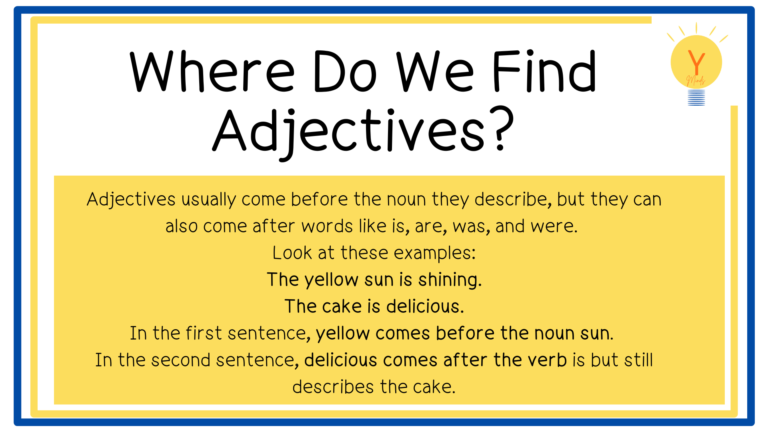
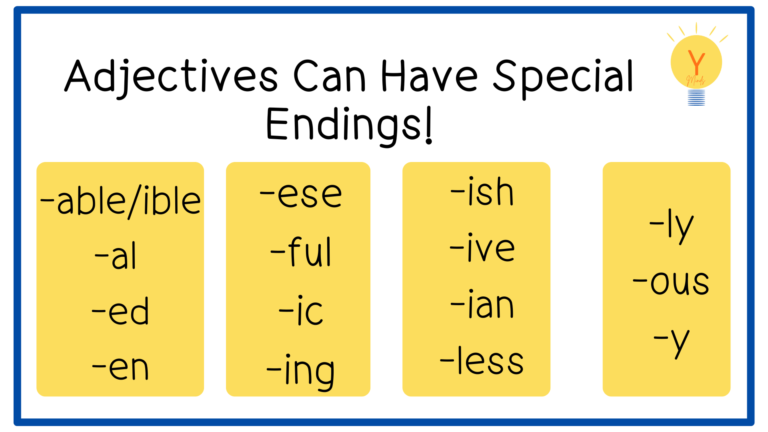
Adjectives Can Have Special Endings!
Did you know adjectives can have special endings? Here are some examples:
- able/ible: lovable, edible, flexible
- al: musical, magical, personal
- ed: bored, painted, scared
- en: written, broken, golden
- ese: Japanese, Chinese, Vietnamese
- ful: joyful, helpful, colorful
- ic: energetic, historic, fantastic
- ing: shining, loving, running
- ish: greenish, childish, sheepish
- ive: creative, massive, active
- ian: Italian, Egyptian, Brazilian
- less: fearless, endless, careless
- ly: lovely, friendly, motherly
- ous: generous, adventurous, dangerous
- y: sunny, windy, messy
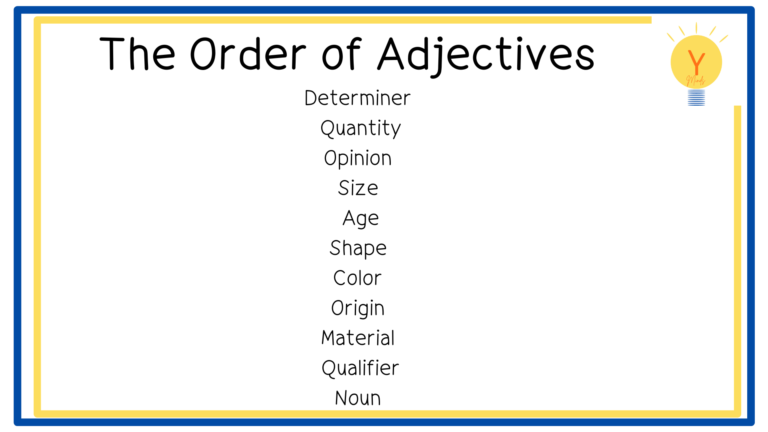
The Order of Adjectives
Sometimes, we use more than one adjective to describe something. When we do this, we follow a special order. Here’s the order we use:
- Determiner (like a, an, the, this, that, those)
- Quantity (how many? one, two, many, few)
- Opinion (how do we feel about it? nice, ugly, lovely)
- Size (how big or small? tiny, huge, medium)
- Age (how old? young, new, ancient)
- Shape (what shape? round, square, long)
- Color (what color? blue, red, green)
- Origin (where is it from? French, American, Chinese)
- Material (what is it made of? wooden, plastic, metal)
- Qualifier (a type of the noun; for example, racing in racing car)
- Noun (the thing being described)
Let’s see this in action:
- The two beautiful small old round blue American wooden toy trains.
Other examples:
- I have two big red balloons.
- She bought a beautiful old wooden chair.
ACTIVITY:
Fill in the Blanks with Adjectives
Let’s make our sentences more fun and exciting! Choose an adjective from the box and fill in the blanks. Ready, Super Learners? Let’s go!
Match the Adjectives with the Sentences!
